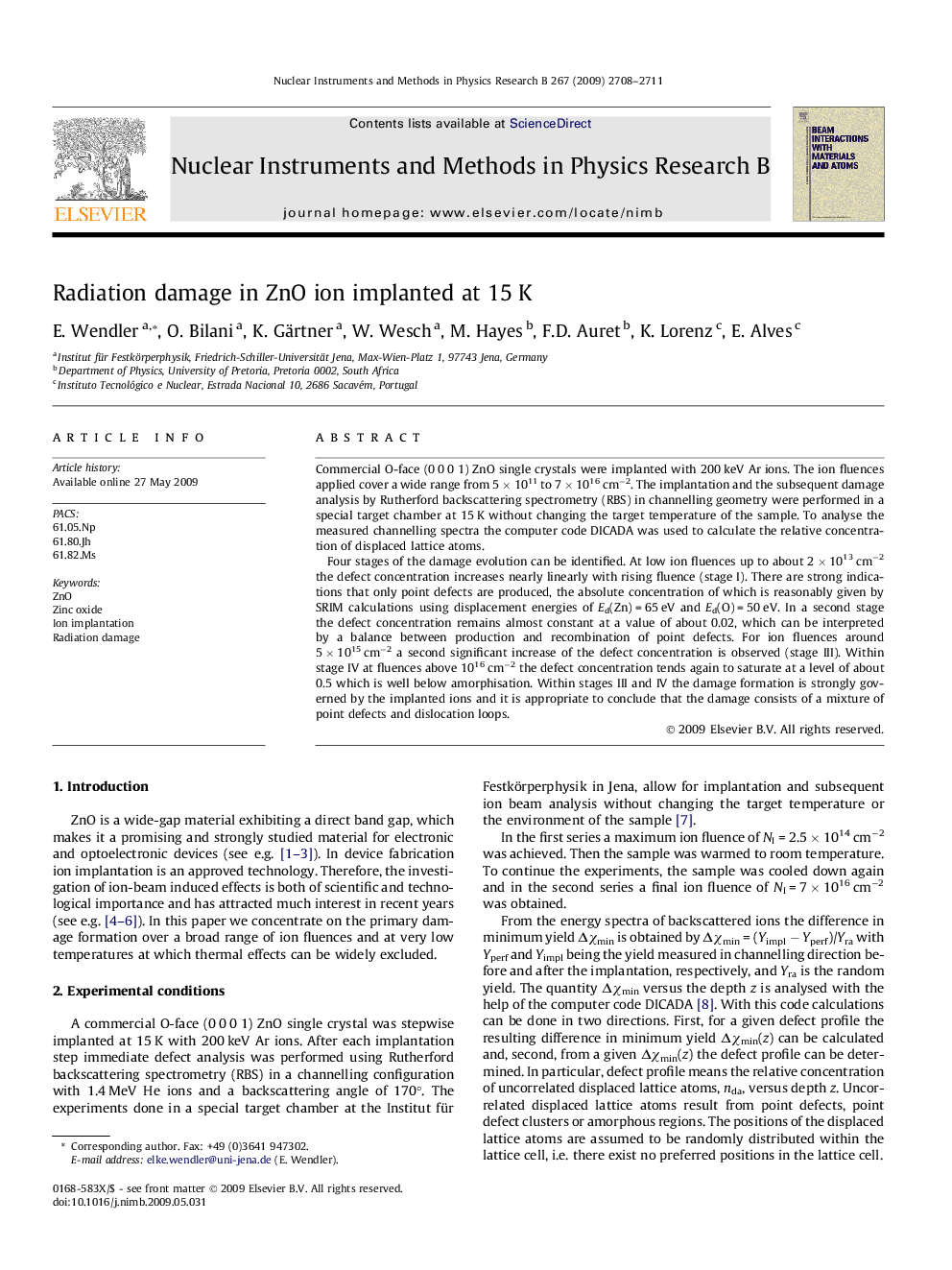| Article ID | Journal | Published Year | Pages | File Type |
|---|---|---|---|---|
| 1684888 | Nuclear Instruments and Methods in Physics Research Section B: Beam Interactions with Materials and Atoms | 2009 | 4 Pages |
Abstract
Four stages of the damage evolution can be identified. At low ion fluences up to about 2Â ÃÂ 1013Â cmâ2 the defect concentration increases nearly linearly with rising fluence (stage I). There are strong indications that only point defects are produced, the absolute concentration of which is reasonably given by SRIM calculations using displacement energies of Ed(Zn)Â =Â 65Â eV and Ed(O)Â =Â 50Â eV. In a second stage the defect concentration remains almost constant at a value of about 0.02, which can be interpreted by a balance between production and recombination of point defects. For ion fluences around 5Â ÃÂ 1015Â cmâ2 a second significant increase of the defect concentration is observed (stage III). Within stage IV at fluences above 1016Â cmâ2 the defect concentration tends again to saturate at a level of about 0.5 which is well below amorphisation. Within stages III and IV the damage formation is strongly governed by the implanted ions and it is appropriate to conclude that the damage consists of a mixture of point defects and dislocation loops.
Related Topics
Physical Sciences and Engineering
Materials Science
Surfaces, Coatings and Films
Authors
E. Wendler, O. Bilani, K. Gärtner, W. Wesch, M. Hayes, F.D. Auret, K. Lorenz, E. Alves,
